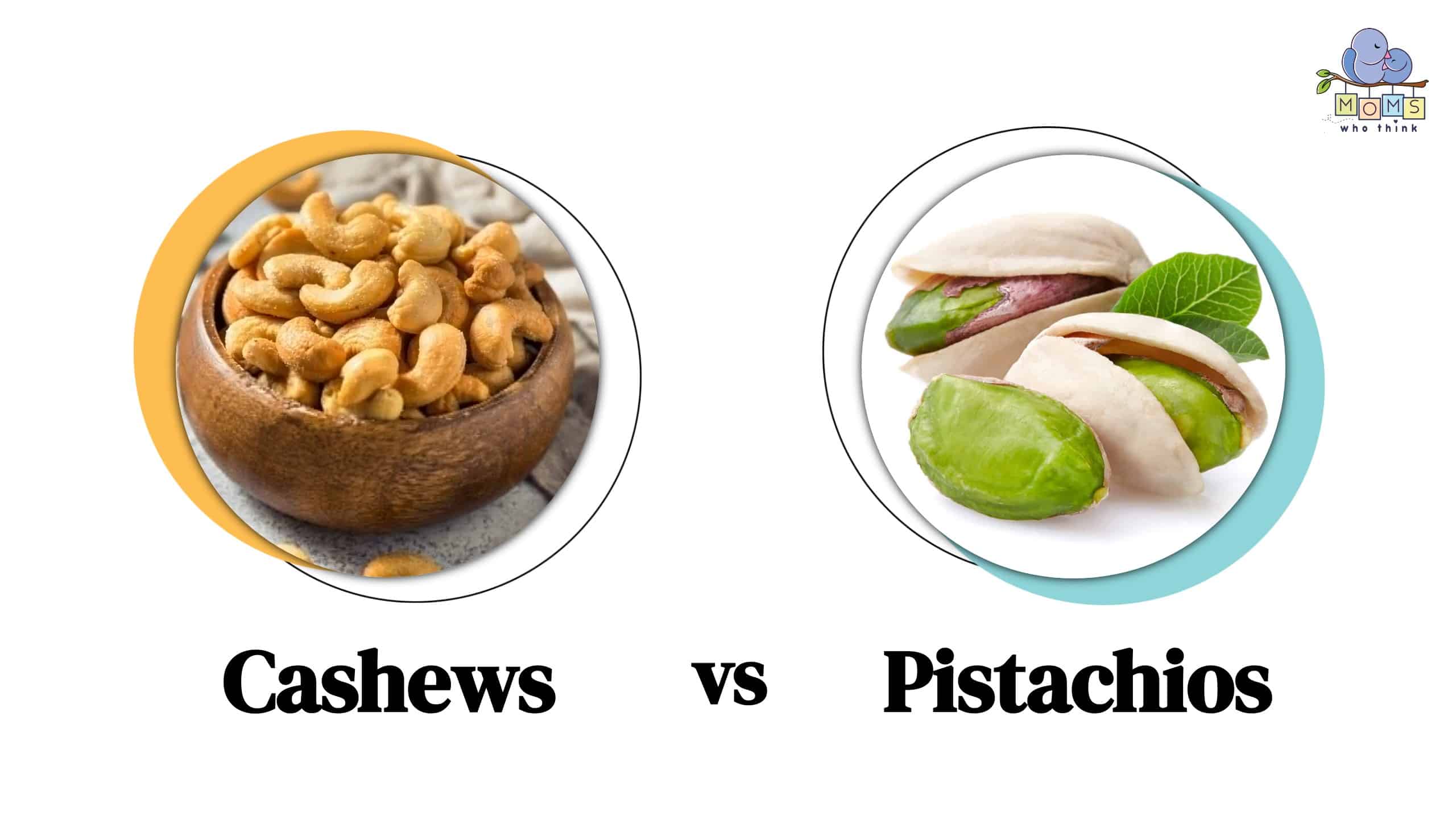In the health world, nuts can offer a wide range of benefits. Many promote weight loss as one of the most significant health benefits because fiber has the ability to make us feel full. Nuts can also be lower in calories, high in protein, and even pack a mighty punch when it comes to minerals and vitamins. Cashews and pistachios are often among the most popular nuts to eat because they contain many benefits. This article will discuss the difference between cashews and pistachios. In a nutshell, the differences lie in the price of each, health benefits, where they originate from, and appearance.
- The must-have convenient reference guide for every home cook!
- Includes more than 8,000 substitutions for ingredients, cookware, and techniques.
- Save time and money on by avoiding trips to grab that "missing" ingredient you don't really need.
Cashews vs. Pistachios: What are the Main Differences?
Although both cashews and pistachios are very similar to one another, there are a myriad of differences between the two. Let's go into more detail.
The very first factor is in the appearance of the two. Pistachios are small, around two centimeters long. They have an outer shell that is beige. However, the inside of the shell is what contains the nut. The nut is the part we eat; it is usually some shade of green with hints of purple.
Cashews, on the other hand, are noticeably different. They are kidney shape and deep brown.
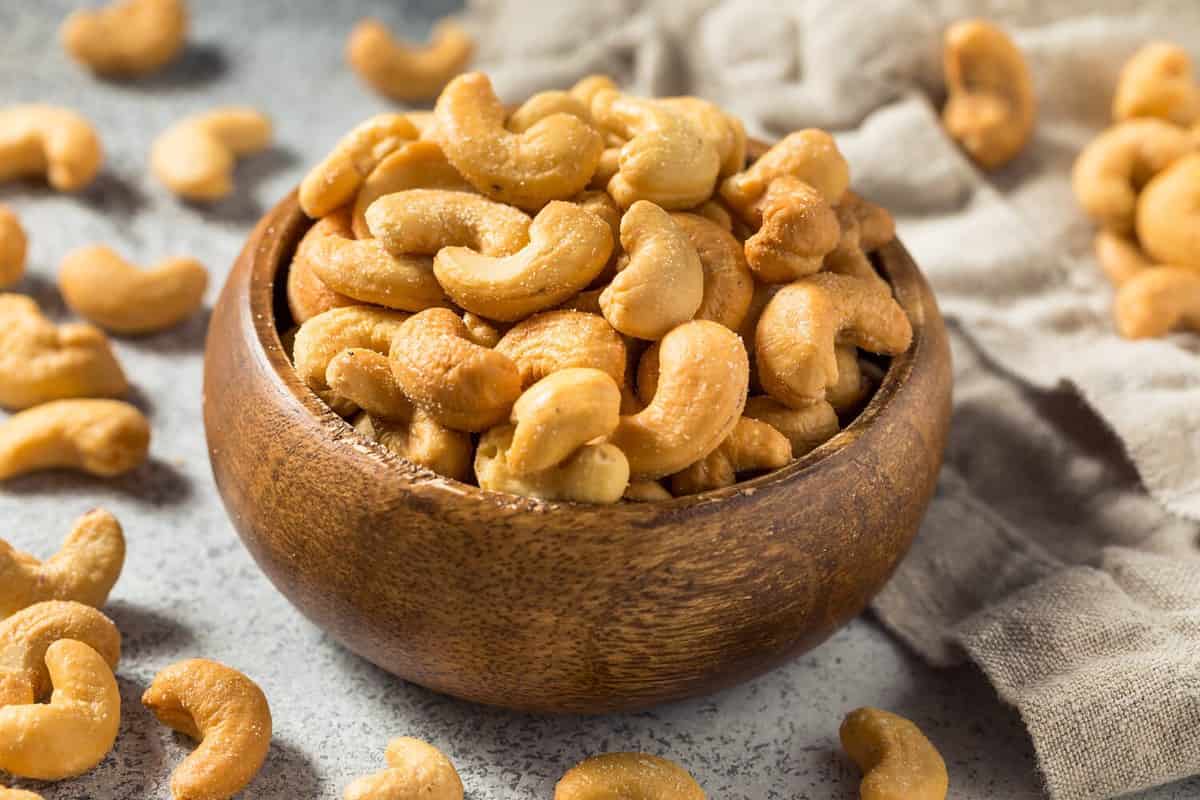
Cashews are versatile and are great in butter, tossed in a salad, or even in a stir-fry.
©Brent Hofacker/Shutterstock.com
Well, That is Nutty
Although pistachios and cashews are classified as nuts, they are not. They are technically fruits. The pistachio grows from the pistachio tree or a Pistacia vera. Cashew comes from the cashew tree, also known by the scientific name Anacardium occidentale.
The cashew nut is extracted from the cashew apple. Buckle up if you have never heard this story because it is fascinating! We typically picture apples, strawberries, or pears when we think of fruit. However, cashews are technically a fruit. They are the fruit that comes from the cashew tree. They grow off of a “false fruit,” also known as the cashew apple. It is red and pear-shaped. This fruit, while not the prize of the cashew tree, is still edible.
Underneath the cashew apple, the cashew grows inside two shells with a skin covering it. Once the outer shell cracks open, you will see an oily substance. This substance is so toxic that you will burn your hands if you try to extract the cashew by hand. Underneath the oily substance is the inner shell. This shell is tricky and quite difficult to crack! Getting to the actual cashew nut can make one wonder, is it even worth it?
Many will say that it is! That is why an extensive extraction process is necessary to get to this fruit nut. It has so many health benefits! Not to mention, it can be very yummy.
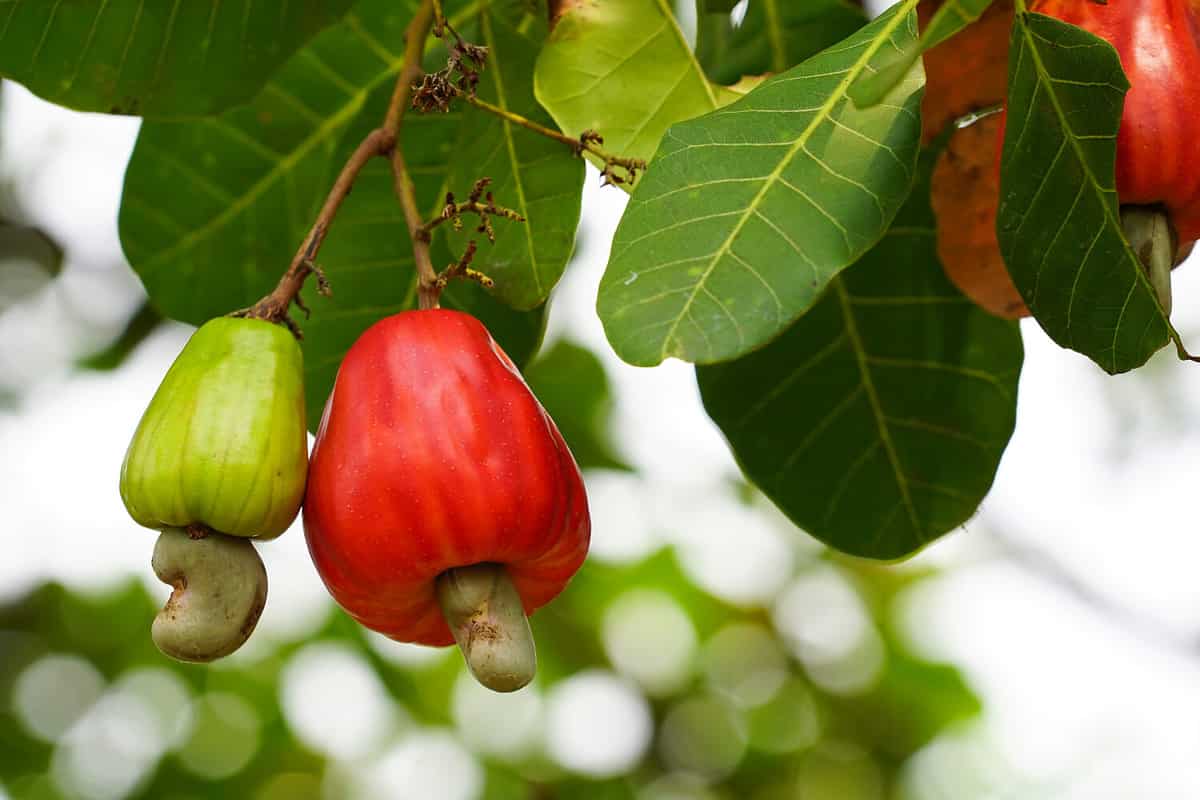
The cashew is found inside the cashew apple. It is under two shells, a thin skin, and a toxic substance!
©SARAH NGUYEN/Shutterstock.com
Back to the Origin
Another difference between cashews and pistachios is where they originate from. Cashews are initially from Brazil. Sometime in the 1500s, Cashew trees and seeds were brought to Africa and India. Now cashew trees are in many different places. However, they do require a specific type of climate. Therefore, they grow in a specific climate.
Pistachios are from the Middle East. The wide belief is that they originate from Iran initially. You can find pistachios in other places around the world. However, much like cashews, they require a particular climate and cannot grow just anywhere. Therefore, in the United States, pistachio trees grow specifically in California, Arizona, and New Mexico.
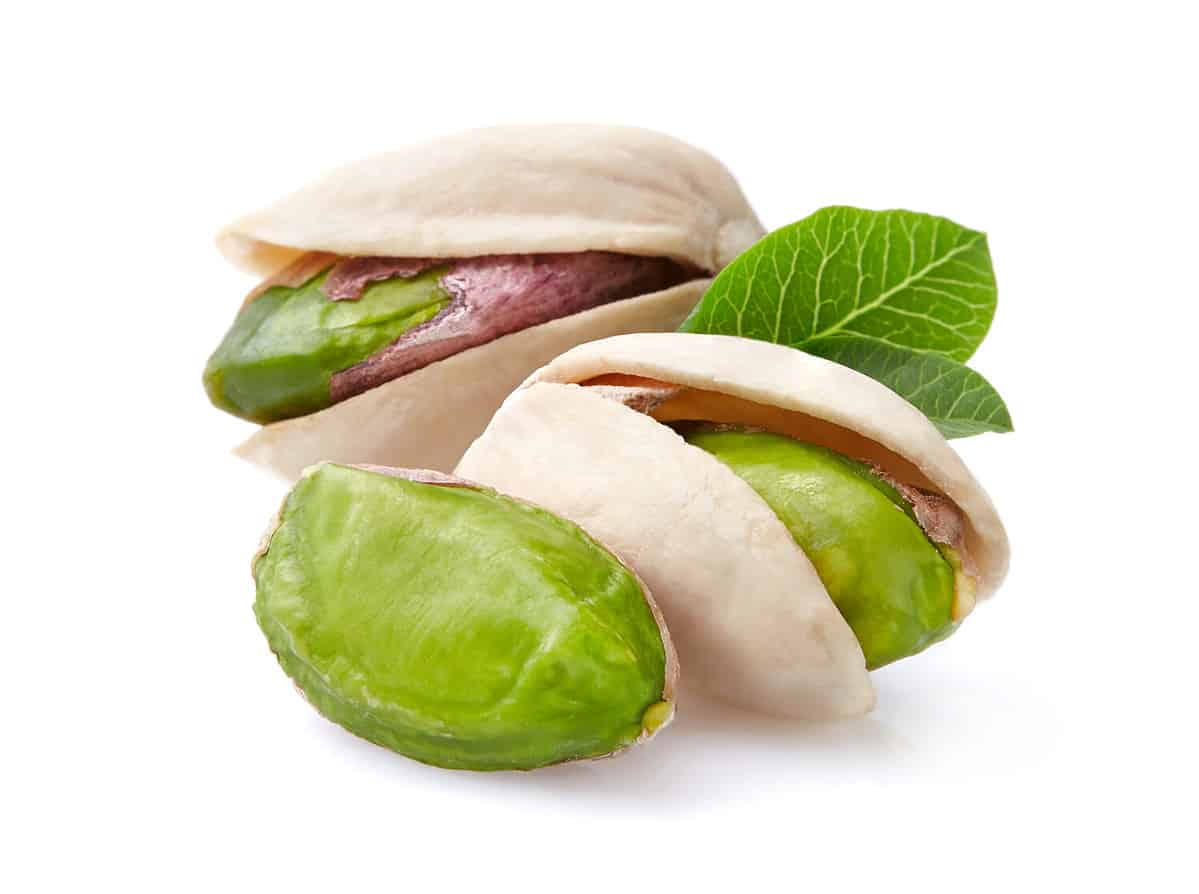
Pistachios are delicious in cakes and butter!
©Dionisvera/Shutterstock.com
Where do They Grow?
Cashew trees flourish in a seasonally dry and tropical climate. The temperatures are best when between 63 degrees Fahrenheit and 100 Fahrenheit. Humidity also plays a role in the optimal growth of a cashew tree. The tree will grow the best when the humidity is between 65 and 80 percent.
Pistachio trees thrive when the summers are very long, hot, and dry. On the other hand, the winters should be chilly and wet but not freezing. The ground should not be frozen; this will not promote optimal growth for a pistachio tree. Unlike cashew trees, pistachio trees do not fair well when the humidity is high.
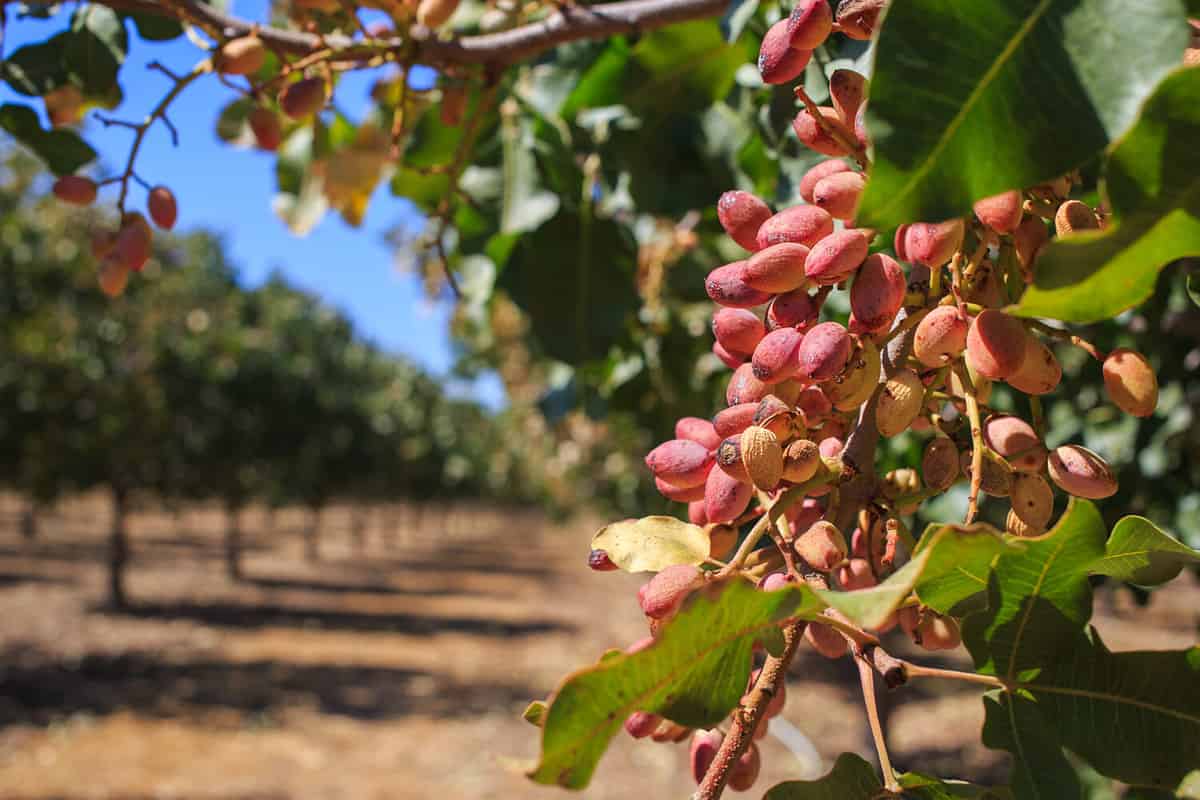
Pistachios are delicious and are found growing in bundles on pistachio trees.
©Losonsky/Shutterstock.com
What's the Price?
Cashews are on the pricier side, and for good reason. The extraction process makes gathering these nuts a more tedious and dangerous venture. Therefore the grocery store prices you see will fairly reflect the process. Cashews typically run around $15 per one-pound bag. However, the price may vary depending on the store and the location of the store.
One of the reasons cashews are so expensive is that it is necessary to destroy the toxin entirely before a person can eat the cashew. The toxin found on the shell is the same toxin in poison ivy. This toxin is urushiol. The effect of eating genuinely raw cashew will be very similar to that of coming in contact with poison ivy. There will be skin rashes and burning. Therefore, the extraction process must be very intensive and thorough. When you buy raw cashews from the store, they are not entirely raw. They still have undergone the processing of removing the toxins and ensuring they are safe to eat. Raw refers to no added sodium or even roasting.
Pistachios are also expensive, although, in some places, they can be cheaper than cashews. They run around the same price as cashews depending on where you shop. The reason for the high price range is similar to cashews. Although pistachios are relatively safe to extract, it is still labor-intensive. The labor of the pistachio harvesters is very tedious and hands-on. Therefore, the price will reflect so.
Also, cashew and pistachio trees can only grow in specific climates. Therefore, the supply is limited to different areas of the country and the world.
Vast Array of Health Benefits
Both cashews and pistachios carry a wide range of health benefits. Let's take a look at cashews first. When eaten raw with no salt added, cashews can be a great way to reduce blood pressure. Eating cashews may have the ability to lower the risk of hypertension.
Cashew nuts may decrease the risk of type two diabetes as well. They contain hypoglycemic properties. These properties help regulate insulin and glucose.
Cashews may also lower the risk of certain cancers and inflammation and help someone lose weight.
Pistachios are likewise thought to lower the risk of certain cancers, inflammation, diabetes, and cardiovascular disease.
Pistachios contain unsaturated acids, fat, fiber, minerals, and antioxidants. Cashews may have the ability to lower cholesterol and prevent stroke.
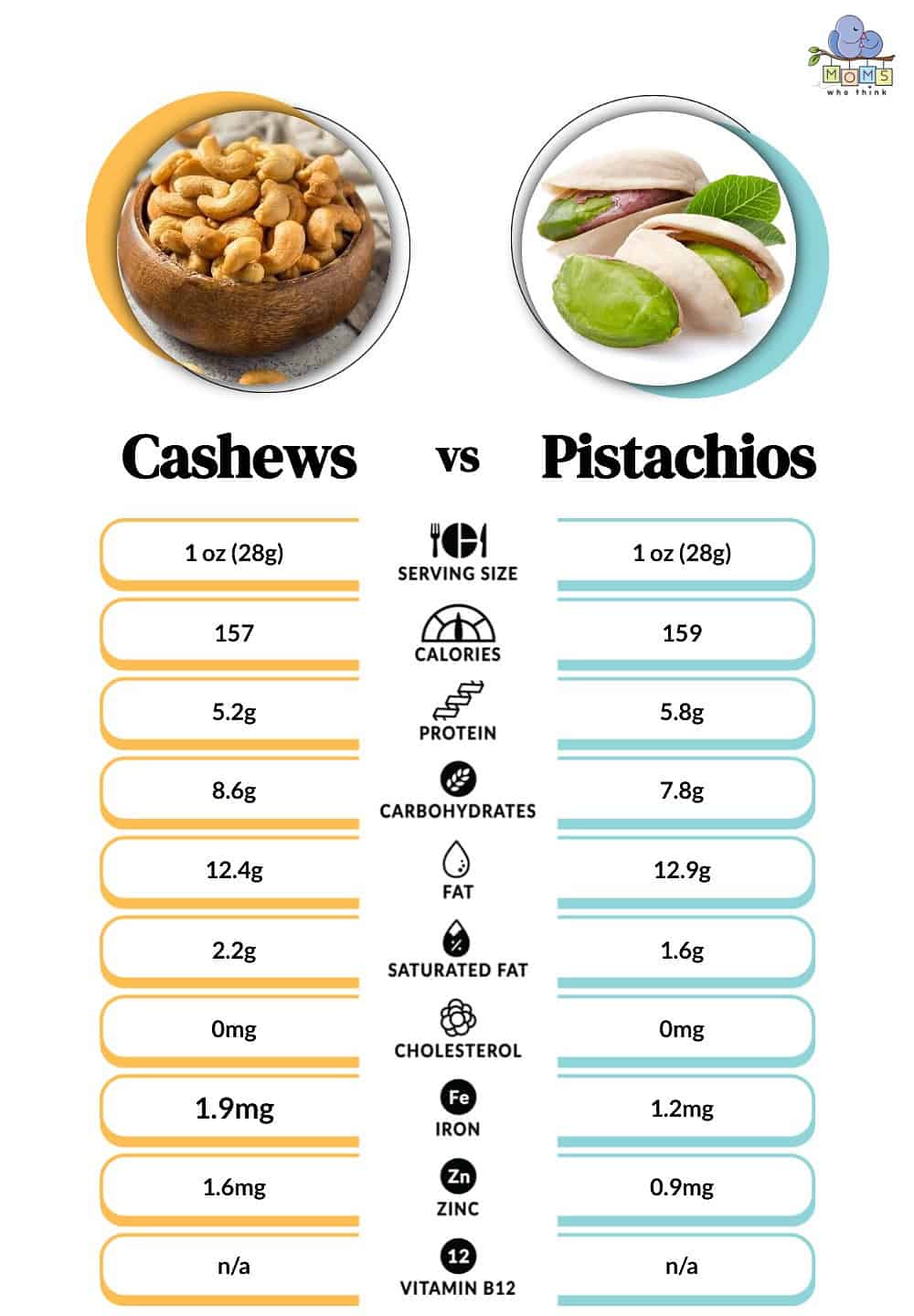
©
Pistachios and Cashews May As Well Be Cousins
Both pistachios and cashews are often called nuts, but they are actually fruit. They belong to the Anacardiaceae family. Also, because they are closely related to one another, they can produce the same allergen. Therefore, those allergic to cashews should also steer clear of pistachios. At the very least, get a test to rule out both allergens.
- The must-have convenient reference guide for every home cook!
- Includes more than 8,000 substitutions for ingredients, cookware, and techniques.
- Save time and money on by avoiding trips to grab that "missing" ingredient you don't really need.
Uses in the Cooking World
There are many different uses for both cashews and pistachios in the cooking world. Cashews can be pureed into butter. They can also be toasted for a snack or added to soups, salads, stir-fries, and more. There is even cashew milk!
Pistachios are likewise prevalent in cooking. Pistachios are roasted or eaten raw. They can also be added to sauces, including pesto, and cooked into cakes and breads. They are even cooked into the breading of meat in some recipes!
In Conclusion
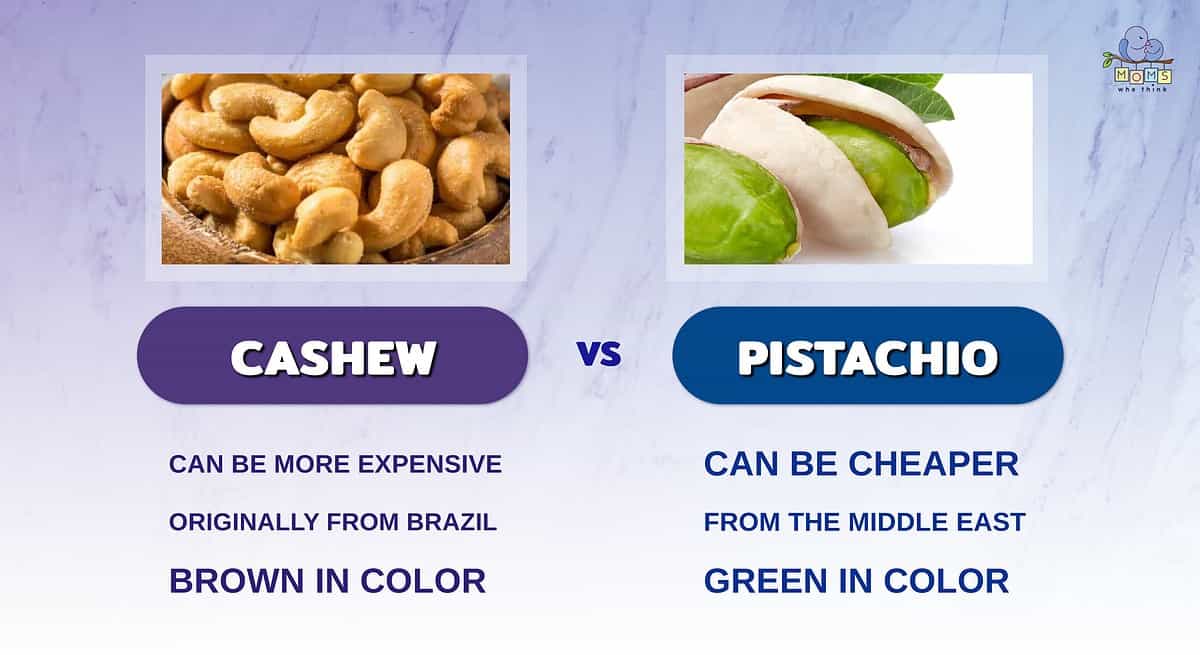
- Cashews may be slightly more expensive than pistachios; even in this case, both options are quite expensive.
- Cashews originally come from Brazil, while pistachios come from the Middle East.
- Pistachios are famous for their green color, while cashews are a plainer brown.
Pistachios and cashews are both delicious and can be very filling snacks. The health benefits are comprehensive and numerous. Furthermore, if you want a filling snack to help you lose weight, either of these nuts is an excellent choice! The price of both may be a shock at first; however, it makes more sense when you realize precisely why the price is high. You may wonder if the prices are worth it for someone who loves the fresh and nutty flavor they offer. The answer is yes! Both cashews and pistachios are excellent nuts that are delicious no matter which one you choose.
Interested in trying a new recipe? Take a look at this cashew crunch recipe:
PrintCashew Crunch
- Yield: 2 entrees, 4 servings each
Ingredients
6 tablespoons soy sauce
¼ cup oyster sauce
4 teaspoons sesame oil
¼ cup water
1½ teaspoons sugar
¼ cup canola oil
2 carrots peeled, julienned
4 cups broccoli
1 package (14 ounces) extra-firm tofu, cut into cubes
4 garlic cloves, minced
3 teaspoons bottled minced ginger
½ of 13.25-ounces package whole wheat rotini
Instructions
1. Bring 5 cups water mixed with 1 tablespoon salt to boil in a large stockpot. Pour in dry rotini and cook until pasta is al dente.
2. Meanwhile, combine soy sauce, oyster sauce, sesame oil, water, and sugar in a small bowl.
3. Heat 4 tablespoons canola oil in a large skillet. Stir-fry carrots and broccoli for 2 minutes. Add cubed tofu; stir-fry for 4 minutes. Add garlic and ginger and cook for 1 minute. Add sauce mixture. Stir to coat.
4. Divide mixture in half. Place first half over noodles and stir to coat. Top with cashews just before serving. Place second half in 1 one-gallon freezer bag and freeze.
To Serve:
1. Defrost in refrigerator and reheat in microwave. Top with roasted cashews, serve warm.
Notes
Freeze up to: 4 months
Comparison Posts
- Flap Meat vs Skirt Steak: How to Know What to Buy and Cook
- Anaheim Pepper vs. Poblano: Little Known Facts
- Himalayan Salt vs. Sea Salt: The Notable Differences
- Wild Lettuce vs. Dandelion: Are They Nature's Medicine?
- Corn Flour vs Corn Starch: Key Differences, Nutritional Profile, Flavor, Substitutions
